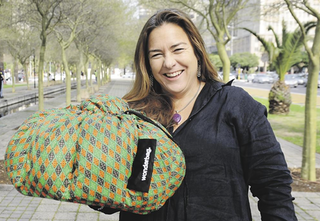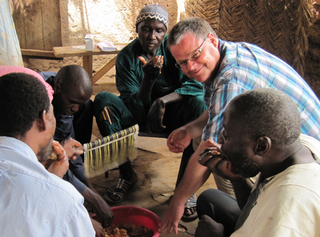
Podcast: Play in new window | Download (Duration: 26:06 — 21.2MB)
Subscribe: Google Podcasts | Spotify | Android | RSS | More
 Quinoa — that darling of the health-conscious western consumer — came in for a lot of flack a few years ago. Skyrocketing prices caused some food activists to claim that the poor quinoa farmers of the high Andean plains in Bolivia and Peru were no longer able to afford their staple food. Every mouthful we ate was taken direct from a hungry peasant. Some people even gave up eating the stuff. Other writers retaliated by saying that high prices were the best thing that ever happened to those poor farmers. And agricultural economists saw an opportunity to prove their worth.
Quinoa — that darling of the health-conscious western consumer — came in for a lot of flack a few years ago. Skyrocketing prices caused some food activists to claim that the poor quinoa farmers of the high Andean plains in Bolivia and Peru were no longer able to afford their staple food. Every mouthful we ate was taken direct from a hungry peasant. Some people even gave up eating the stuff. Other writers retaliated by saying that high prices were the best thing that ever happened to those poor farmers. And agricultural economists saw an opportunity to prove their worth.
The results are in. High prices are indeed good for farmers. And they had no impact on nutrition among either quinoa farmers or those who merely buy it from time to time. If you gave up on quinoa, you can take it up again with a clean conscience.
But that’s not to say all is perfect. In this episode, the impact of high prices on quinoa farmers, the problems to come and how western consumers can be part of the solution.
Notes
- There’s quite a lot about quinoa’s various ups and downs over at the other place. This is a good place to start.
- Bellemare, Fajardo-Gonzalez and Gitter’s paper is Foods and Fads: The Welfare Impacts of Rising Quinoa Prices in Peru.
- Andrew Stevens’ paper is Quinoa Quandary: Cultural Tastes and Nutrition in Peru.
- Bioversity International has lots of information about Payments for agrobiodiversity conservation services.
- Lots more from Andean Naturals at their website.
-
The banner photograph I took in Cotacachi, Ecudaor. And the cover image uses a Wikimedia image by Christian Guthier – originally posted to Flickr as Homegrown Quinoa!, CC BY 2.0.




 When it comes to cradles of agriculture, West Africa does not often get a look in. The Sahel is better known as a place of famine than of feasting, but it wasn’t always so, and even today the Bamana people of Mali have a rich food culture.
When it comes to cradles of agriculture, West Africa does not often get a look in. The Sahel is better known as a place of famine than of feasting, but it wasn’t always so, and even today the Bamana people of Mali have a rich food culture.